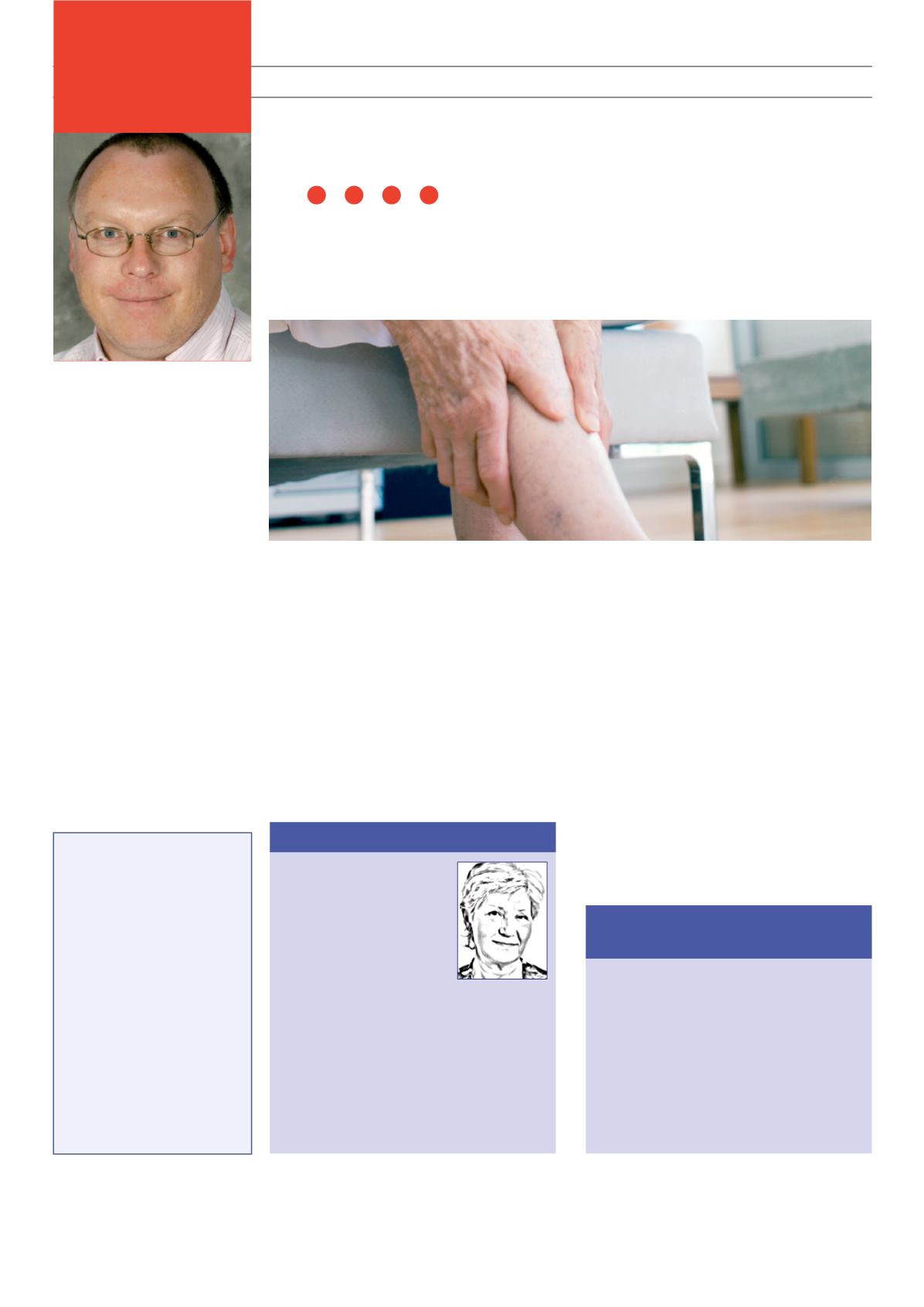
VOLUME 8 NUMBER 4 • NOVEMBER 2011
163
SA JOURNAL OF DIABETES & VASCULAR DISEASE
Case Study 2
Type 2 diabetes patient with
muscle aches on statin therapy
Presented by
Dr Patrick Twomey
Consultant Chemical Pathologist (with
a special interest in lipidology), Ipswich
Hospital, UK
Originally in:
Prim Care Cardiovasc J
2010; 3(1): S8–S10
doi: 10.3132/pccj.2010.012
S Afr J Diabetes Vasc Dis
2011;
8
:
163–164
Key points
• All statins can cause muscle
symptoms such as pain, tender-
ness or weakness, with or with-
out elevation in creatine kinase
levels
• Hydrophilic statins, such as
rosuvastatin or pravastatin, may
be less likely to cause muscle
symptoms
• Ezetimibe, either alone or as
add-on to low-dose statin thera-
py, or nicotinic acid, are options
if symptoms persist in the well-
controlled patient
• 56-year-old, healthy weight
(70 kg, BMI 25 kg/m
2
)
• Good control of glycaemia
(HbA
1c
6.6%) and blood pres-
sure (132/82 mmHg)
• Total cholesterol 5.0 mmol/l,
HDL cholesterol 1.30 mmol/l,
LDL cholesterol 2.88 mmol/l, triglycerides 1.8 mmol/l
• Taking simvastatin 40 mg, aspirin 75 mg, metform-
in 1.5 mg daily
• Complains of generalised aches and pains, particu-
larly when exercising
• CK, thyroid function and liver function tests within
normal limits; eGFR 55 ml/min/1.73 m
2
• UKPDS risk engine: 10-year risk of CHD 7.5%, fatal
CHD 4.4%, stroke 3.8% and fatal stroke 0.5%
Box 1: Rose, type 2 diabetes for 10 years
S
tatin intolerance is defined as the presence of
clinically significant adverse effects associated
with statin therapy that are considered to
represent an unacceptable risk to the patient or that
may result in compliance being compromised. All
statins can cause myositis: muscle symptoms such
as pain, tenderness, or weakness accompanied by
creatine kinase (CK) levels > 10 times the upper
limit of the normal reference range. Statins have
also been implicated in the development of myalgia:
muscle aches and pains not associated with any
significant elevation in CK levels.
A patient with type 2 diabetes suffering unex-
plained muscle aches and pains might consider dis-
continuing statin treatment, but the well-established
evidence base supporting statin therapy for CVD
prevention underlines the importance of continuing
with LDL-lowering therapy. Managing these patients,
such as Rose (see Box 1), poses a dilemma to the
physician. Possible treatment options are summa-
rised in Table 1 and discussed below.
CLINICAL OPTIONS
There are a number of factors to be considered in
the management of Rose. Her cholesterol treatment
targets should be 4.0 mmol/l for total cholesterol and
2.0 mmol/l for LDL cholesterol, based on the JBS 2
and NICE guidance. However, her reported general-
If symptoms resolve after discontinuing statin therapy:
• Switch to a hydrophilic statin (e.g. rosuvastatin or
pravastatin) less likely to cause muscle pain
• Re-introduce simvastatin at 10 mg and slowly up-
titrate to the optimal dose that does not cause mus-
cle symptoms
• Add on ezetimibe to low-dose statin therapy
• If symptoms persist, consider ezetimibe mono-
therapy
Table 1. Expert recommendations for cholesterol
management for Rose


